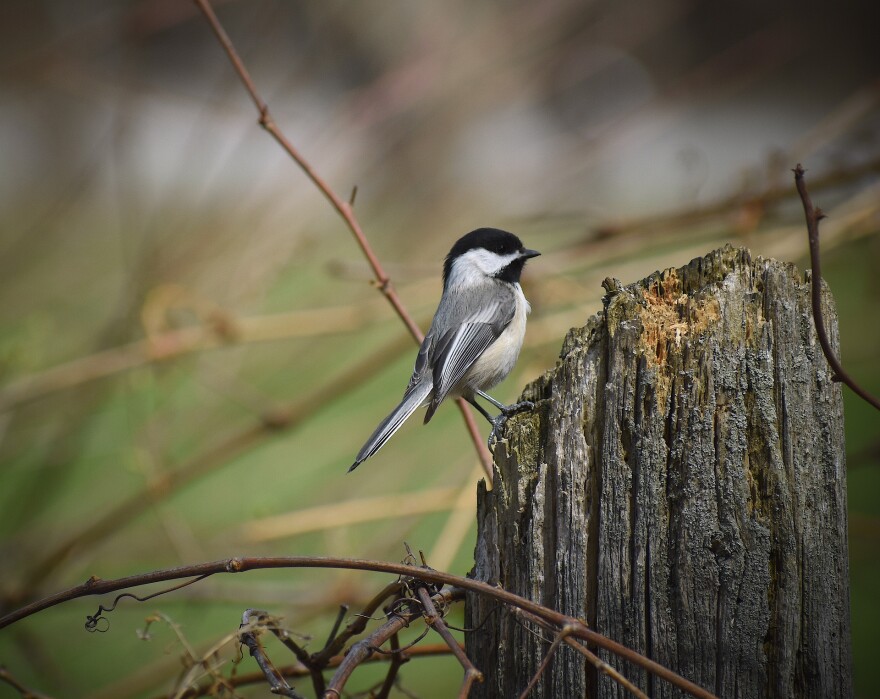This summer, while watching white-crowned sparrows, pine siskins and Cassin's finches feeding on the sunflower seeds we’d scattered on the rail of the cabin porch, I had the experience of a black-capped chickadee eating out of my hand as I sat, statue-like, palm out, lifted and flat.
Chickadees can become quite tame, and they are frequent users of bird feeders. As fall arrives and sparrows and siskins fly south, you'll still notice chickadees flying about, voicing their friendly call.
The black-capped chickadee is a year-round resident of Montana. In winter, it flocks in groups of about twelve birds. Some of the birds who are of low rank and without a mate will often switch flocks.
Chickadees will readily make use of your bird feeder during the long winter months. However, you don't have to feel as though their life depends on you. The research that's been done on chickadee feeding habits in winter has found that only 20 to 25 percent of their food comes from bird feeders.
Mostly, they feed on insects and seeds found in the woods and grasslands. When the temperature drops under 10 degrees, however, the survival rate of chickadees doubles if they do have access to a bird feeder. The chickadee only weighs half an ounce, and in cold temperatures must eat 20 times as much as they do in the summer.
We can enjoy seeing this little black-capped bird in the months to come, and in the days when it's really cold this winter, remember the resident chickadee flock and add some sunflower seeds to your bird feeder.
"Field Notes" is produced by the Montana Natural History Center.
(Broadcast: "Fieldnotes," 9/27/07, 09/30/07, 09/29/20 and 10/2/20. Listen weekly on the radio Tuesdays and Fridays at 4:54 p.m., or via podcast.)

